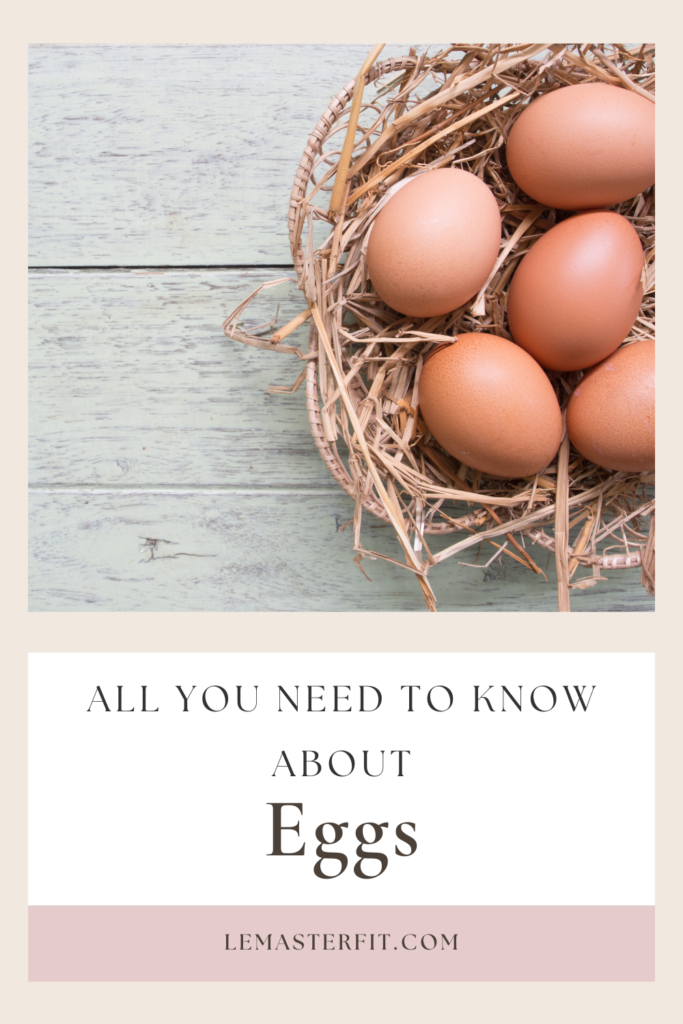Confusion with eggs
We know that breakfast is super important. But what you eat for breakfast is equally important as simply eating breakfast! One breakfast food that seems to take center stage is eggs. Now I know, there seems to be a lot of controversy over eggs and which eggs are best, brown vs white eggs, organic or not, cage free, free range, or caged eggs, etc.

How do we decide what eggs to eat to feel good about a healthy meal decision and about our purchase and the care for the animals that brought us these delicious nuggets of golden nutrition?
Have no fear. I want to put these questions to rest and ease your mind a bit. Get your peace of mind back when you are in the grocery store, a bit of extra cash in your pocket, and some fun facts to gallantly wield on the random stranger who tries to argue with you when you pick up a dozen eggs from caged hens. Or when you are deciding between the health benefits of brown vs white eggs, you can decide with confidence.
Let’s crack some eggs and break things down in a purely scientific and logical way.
Organic eggs: not all they are cracked up to be!
When I see the word organic, I immediately think $$$. Seriously, when companies plaster words like “Organic” onto their products, they get to raise prices. Those labels and the higher price trick you into thinking that you are buying better value and a premium product. But what does organic actually mean?
If you have wondered about this in the grocery store, don’t worry. You are not alone. What’s worse is when you go to the website that is supposed to answer these questions they leave you with confusing definitions that don’t seem to define anything at all. Basically, organic means there were no synthetic fertilizers and a few restrictions on feed for the animals. Other than that, the terminology seems open for interpretation.
Brown vs White eggs – which is better?

Have you ever noticed that “organic” labelled eggs seem to always have a brown shell? Or that the dozen of brown shelled eggs are twice as expensive as the white shell eggs? Does that mean that brown eggs are more nutritious and healthier than white eggs? No. No, it does not. The brown shell isn’t to symbolise it is organic or that the eggs are more nutritious. No! Eggs with brown shell are brown simply because they come from a breed of chicken that produces a brown coloured shell. These breeds are different than the chickens that produce white shelled eggs.
Chickens that lay white eggs are, more often than not, Leghorn Chickens and they are very prolific, laying around 300 eggs/year. Some breeds that lay brown eggs, like the Rhode Island Red or Plymouth Rock breeds, don’t produce as many eggs a year (about 180-200 eggs/year). Because they do not lay as many eggs, there are fewer eggs to sell than the Leghorn Chicken counterparts. These differences in yearly egg quantity lead to a price difference – brown eggs are more expensive
Fun fact: DO NOT fall for the “not hormones added” claim–hormones are BANNED in the poultry industry. But, that doesn’t mean companies can’t put the label on their products. The problem is that these companies charge for the label, even though it is meaningless.
Caged free eggs
Similar to free-range where there are no cages, but caged free birds don’t necessarily have access to go wander outside. This housing style still provides a place for birds to nest. However, being inside also means that the birds don’t have to worry about predators. However, they still may not get as much feed as a caged animal because chickens can be a bit dominating (after all, they are related (distantly) to the T-Rex). Cage free birds are often in very large group sizes. The weaker chickens in the flock will probably get what leftovers they can find.
Free-range eggs
Free range means that hens had outdoor access and therefore the hens can eat other food rather than just grain. This includes insects and flowers like marigolds (which can give the appearance of a deeper golden coloured yolk). But, being outdoors and potentially stressed from predators, the appetite of animals drops and the animals often eat less feed. However, because the birds are outside, there is little chance of an insect problem on your farm.
Let’s think about the chicken. Chickens are naturally prey animals. Being outdoors means that there is a high risk or getting killed by a fox, a hawk, or some other opportunistic predator.
On top of being chased by predators, chickens can also be the culprit. Chickens can smother other birds to where they will get in a group and pile on top of each other. The birds at the bottom of the pile seldom survive. Feather pecking is also a concern for free range and caged free birds. Feather pecking is when chickens pull out another bird’s feathers causing injury and, if that wasn’t enough to frighten you, chickens will often cannibalize the injured chicken.
Regular caged eggs
Caged birds often seem content. These caged birds are also better protected from infections that free range birds face, such as avian influenza. In Victoria, Australia, in 2021, over 460,000 free range birds died from avian flu.
The fact that the birds in caged environments have their own space keeps them safe from predators and other birds, feather pecking, and cannibalism. However, being in cages can also limit the movement of the animals including wing spreading. The hens in cages are grouped in smaller group sizes which limits social competition. These group sizes are much smaller than those associated with free range/cage free birds. They also get a balanced diet without having other birds come and take their food or having to forage for their own. Being in a cage also means that the environment is cleaner, the animals are not exposed to harsh elements, and water is continuously provided. When an animal is less stressed from these risks, the quality of the eggs may actually improve.

This is because the bird can feel at ease laying eggs instead of feeling stressed about the potential of getting eaten by a fox or by another angry chicken. Like most things, there are advantages and disadvantages of all housing. Some of the disadvantages of caged hens is a slight limitation on some of the movement of the animals, like dust bathing however, cages and housing systems have adapted over time where some caged animals also have opportunities to move about in a larger pen.
What’s the takeaway?
Hopefully you now know that there is virtually no nutritional difference comparing brown vs white eggs. I also hope you learned enough to help prepare you for the varieties of eggs at the grocery store. Overall, the nutrition content of caged animals does not differ from the other chickens that either get a few hours or all day to run around outside. However, depending on how you look at chickens and their behaviour, caged chickens can be less stressed compared to caged free and free-range/outdoor chickens. This is because chickens are prey animals and could easily grabbed by a hawk or fox and quickly turn into another animal’s lunch.
Caged chickens don’t have the stress of being out in the open, even if that means they are somewhat restricted. When we limit the stress of animals, the quality and value of the animal products is often better quality, which can mean better taste. If you’re like me and look for ways of saving a few extra dollars, do your wallet a favour and buy the generic eggs. Like everything however, there are pros and cons to each side of the discussion. Therefore, it is ultimately up to you to make the decision at the grocery store!
When you do that, check out my amazing omelette recipe and indulge yourself in a fantastic, home cooked, farm raised meal!
Leave a Reply